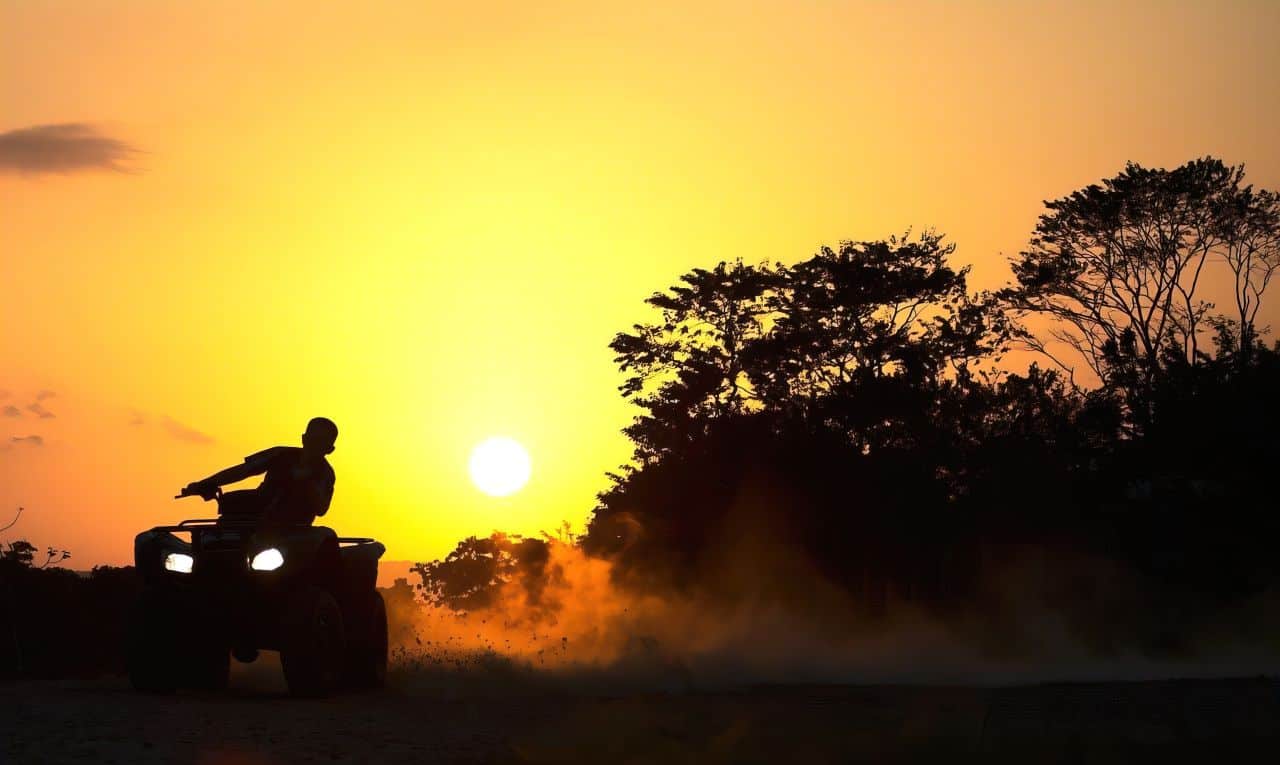Off-roading on an ATV is one of life’s great joys. Especially in the summer, exploring nature from a four-wheeled perch – with the engine growling underneath you and the wind whipping in your face – is an unmatchable experience everyone needs to try. But you need to keep your wits about you.
Off-roading comes with a separate set of rules than your average on-road ATV ride. Without clearly designated road signs, accessible pit stops and other drivers around to help if you get stuck, you have to take a few extra precautions to protect yourself.
In this post, let’s run through a short checklist of items to consider before you hit the trails.
Service Your Vehicle
Before you off-road with an ATV, take it to an expert to be serviced. Whether the vehicle is a year old or ten years old, it may have issues that present themselves at inopportune times. The last thing you want is to break down in the middle of nowhere while off-roading.
Have a service specialist check your tires, chain, fluids, controls and lights. Purchase the requisite ATV accessories – like tires, chains, etc. – and ensure they are correctly installed/mounted.
Pack a First Aid Kit
Even with a perfectly functioning vehicle, you should plan for the worst. You may tip back on a steep incline or keel over in an angled ravine. For those unforeseeable accidents, come prepared with a first aid kit. Among other things, always include:
- Bandages
- Antiseptic wipes
- Gauze
- Burn cream
- Scissors
- A whistle
- A flashlight
Additionally, bring tools like an Allen wrench set and pliers in case your vehicle needs a quick fix in an emergency situation. Depending on where you ride, you may also want to bring bear spray.
Bring Extra Fuel
The last thing you want is to run out of gas in the middle of a forest with no station around for miles. Before you head off-road, pack a 5-litre fuel pack in your holster or saddlebag.
Don’t Forget to Eat and Hydrate
In addition to the first aid kit mentioned above, bring snacks and fluids. You will need sustenance and hydration throughout your ride (ATVing can be a surprisingly good workout). But the real reason to pack snacks and fluids is for emergency situations. Should the worst happen, you want to ensure that you have enough sustenance to survive in the wilderness as you find your way back.
Dress Safely
Quality gloves, good pads and a reliable helmet are your first lines of defences when you ride an ATV. If you have an accident, they help lessen the impact and severity. Even if you are a seasoned professional with thousands of hours of off-road experience under your belt, you still need safety gear. When you take your ATV in for service or to buy ATV accessories, ask the vendor about their safety gear.
Exploring nature in your ATV should be a thrilling experience, but it should never be a life-threatening one. Before you drive off the beaten path, follow the safety tips above.

